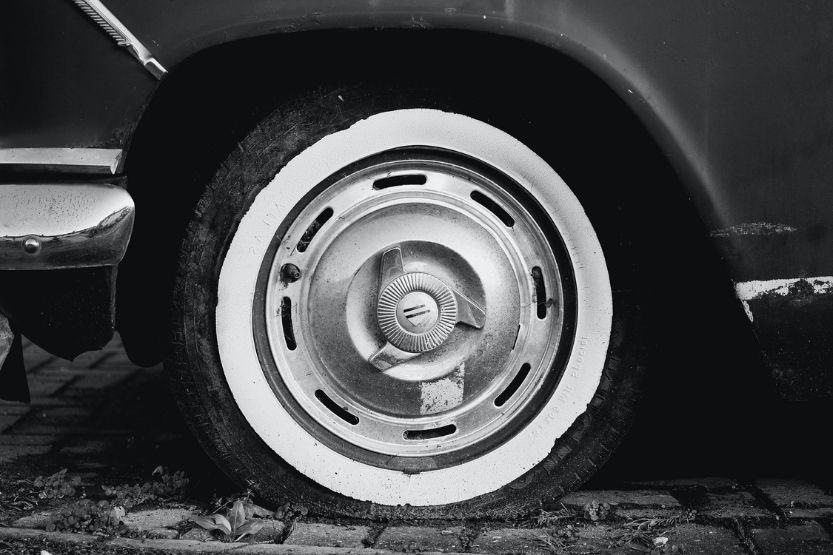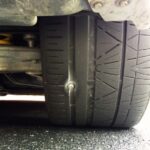When it comes to tire sealants, two of the most popular brands on the market today are Fix-a-Flat and Slime. Each product has its own merits and level of effectiveness in sealing up punctured tires. But when it comes to comparing Fix-a-Flat vs Slime, which product holds the immense advantage and the best value?
Fix-a-Flat and Slime are both effective and efficient tire sealants in their own right. Each product can seal and inflate leaking tires in only a matter of seconds. But the difference between them lies in their sealing power, endurance, and the type of tires you can use them on.
Read on to learn more about Fix-a-Flat and Slime, including their features and differences.
Fix-a-Flat Vs Slime

Slime and Fix-a-Flat are effective and efficient tire sealants in their own right. Both are capable of sealing and inflating leaking tires in only a matter of seconds. But they have several differences, especially in sealing power, endurance, and the type of tires you can use them on.
More on Fix-a-Flat
The last thing you would want to happen is getting a flat tire in the middle of the highway. Imagine if you are several miles away from a mechanic. Then, there’s no access to tools or spare tires in the trunk.
Aerosol Tire Sealants for Flat Tires
At times like this, aerosol tire sealants are a convenient temporary solution. It will help you get back on the road until you have the opportunity to change tires. The first such product, Fix-a-Flat, was invented way back in 1970.
Utilizes a Dual-action Sealing and Inflating Method
A pioneer in the market, Fix-a-Flat (FAF) is the first word in canned tire inflators. It utilizes a dual-action sealing and inflating method. This simultaneously seals punctures from within the tire. Also, it pressurizes the remaining air to inflate the tire to its original state.
Can Seal Punctures up to a Diameter of ¼ Inch
With 33% more sealing power, Fix-a-Flat can seal punctures up to a diameter of ¼ inch, and you can install it in 3 minutes or less.
Usable on Highway and Non-highway Tires
This product can be used on highway and non-highway tires and provides a mileage of up to 100 miles. On the downside, it cannot withstand pressure for too long. It freezes at a temperature below 32° F. This makes it incompatible with freezing weather.
Ecologically Friendly
Fix-a-Flat is safe for consumers and is ecologically friendly. Made from water-based ingredients, it has low global warming potential and is 100% recyclable.
More on Slime
Boasts of Sealing Tire Punctures up to 1/4 inch in Diameter
In 1989, the appropriately-named green liquid Slime was an alternative tire sealant brand to Fix-a-Flat. Like FAF, it boasts of sealing tire punctures up to 1/4 inch in diameter via its patented fibro-seal technology.
Not Capable of Inflating Tires
Unlike FAF, however, it is not capable of inflating the tire. But Slime does have a separate tire inflating product.
Yellow Label Emergency Flat Tire Repair Variant
Slime has products for specific vehicle types. The yellow label Emergency Flat Tire Repair variant is ideal for highway tires, including:
- Cars,
- Motorcycles,
- Trucks,
- Trailers, and
- SUVs.
Blue Label Prevent and Repair Variant
They also have a blue label Prevent and Repair variant suitable for non-highway tires. These include the following:
- Dirt bikes,
- ATVs,
- Trailers,
- Tractors,
- Rolling mowers, and
- Dollies and wheelbarrows.
Blue-label Slime Can Hold up for Two Years
But the biggest advantage of the blue-label Slime is that its seal can hold up for two years! And, if the tire is still in good condition afterward, you can apply more Slime to the tire. Of course, you still should replace the tires when you can.
Other Slime Products
Other Slime products include a red label Prevent and Repair variant for off-highway tubes and a black label 2-in-1 sealant for off-highway tires and tubes. Both of these also promise a 2-year tire life. But it can also seal punctures of up to 1/8 inch.
Can Withstand Temperatures from -37°C to 82°C
Slime can withstand temperatures from -37°C to 82°C. It does not come in aerosol cans. But rather in bottle dispensers, making them safe for the environment. Also, Slime is insoluble in water, non-toxic, non-corrosive, and non-flammable.
Again, Fix-a-Flat vs Slime – which is better? Fix-a-Flat and Slime tire sealants both can quickly seal and inflate your leaking tires. The difference between these two products lies in their sealing power, endurance, and the type of tires you can use on.
What Is the Difference Between Fix-a-Flat and Slime?

Let’s compare Fix-a-Flat and Slime. Also, let’s strictly stick to the emergency tire sealant variant in the latter’s case.
So, let’s focus on the following factors:
- Capability as a Tire Sealant
- Durability
- Versatility
- Eco-friendliness
1. Capability as a Tire Sealant
Both can seal tire punctures of up to ¼ of an inch. However, Fix-a-Flat has the advantage of being both a tire sealant and inflator in one product. On the other hand, there are two individual Slime products for sealing and inflating tires.
2. Durability
In terms of sealing power, Slime appears to be more durable. It provides a seal lasting about two years (and possibly longer).
And in contrast with Fix-a-Flat’s vulnerability to cold temperatures, Slime seems to possess superior heat resistance. It can endure temperatures from -37 to 82°C.
3. Versatility
But Fix-a-Flat is the more versatile tire sealant. You can use it on the highway and off-highway tires. On the other hand, Slime (specifically the yellow label variant) only applies to highway tires. You will need to get other Slime products for other types of tires.
4. Eco-friendliness
Both Fix-a-Flat and Slime boast of being environmentally safe. Fix-a-Flat is available in aerosol cans. But they do use an eco-friendly propellant formula that reduces the equivalent of a million tons of carbon dioxide. Also, the cans themselves are 100% recyclable.
Slime is available in more ozone-friendly bottle dispensers, even though they are plastic.
Which Is The Better Tire Sealant?
Fix-a-Flat and Slime both possess their strengths and weaknesses. As to which is the better tire sealant brand, it depends on what you are looking for.
Fix-a-Flat offers a quick, convenient, and versatile product. It both seals and inflates flat tires and can be used on any tire. But if you’re looking for a longer-lasting and enduring tire sealant, then Slime is the product for you. Keep in mind, though, that you will spend extra on a separate tire inflator.
Frequently Asked Questions – Comparing Fix-a-Flat and Slime

Here are several frequently asked questions to help you decide if Fix-a-Flat or Slime is the best product for you:
How Does Fix-a-Flat Work?
Both a tire sealant and inflator, a Fix-a-Flat can contain a liquid sealant as well as a small amount of air. When the button is pushed, the compressed air within the can pushes the sealant into the tire.
It will then seek out and seal up the puncture. This happens while the tire is filled with enough air to lift the rim from the ground.
How Does Slime Work?
Slime tire sealant coats the inside of the tire or tube within the tread area. This enables it to seal the punctures in that area. When the tire is punctured, the sealant is carried by air to the puncture.
The sealant’s liquid portion escapes while the binders and fibers build up and intertwine. This will form a flexible plug that allows the Slime to seal the punctures occurring in the tread area instantly.
How Long Does Fix-a-Flat Last?
In a tire, Fix-a-Flat must be removed within three days or after driving 100 miles, whichever comes first. In the can, the shelf life of Fix-a-Flat is two years from its date of manufacture. The manufacturer guarantees that it will retain its quality within 90 days from its purchase date.
How Long Does Slime Last?
Slime has a shelf life of four years from its manufacturing date. Ensure that you store it in a cool, dry place in its original packaging. The age of the sealant is indicated in the production date code found above the label on the bottle.
Will Fix-a-Flat Damage My Tire?
As long as Fix-a-Flat is applied as directed on the label, it will not damage most tires.
Will Slime Damage My Rims?
It is not recommended to use Slime on rims with pre-existing damage. Slime should also not be left on tires for more than two years. Beyond that period, the integrity of the rims might be affected.
Can Fix-a-Flat Treat Punctures in Quiet Tires?
It is not recommended to install Fix-a-Flat into quiet tires as a layer of foam coats their tread area. This will instantly absorb the sealant.
It will prevent it from reaching and treating the puncture and causing tire vibrations. You cannot remove the sealant from the foam, so you have to replace the tire.
Can Slime Treat Punctures in Quiet Tires?
Slime is not recommended for use on quiet tires. This is because their tread area is coated with a foam layer. It will instantly absorb the sealant and prevent it from reaching and treating the puncture.
Also, it will most likely cause tire vibrations. There is no way of removing the sealant from the foam, and you will need to have your tire replaced.
Can Fix-a-Flat Treat Punctures in Run Flat Tires?
Fix-a-Flat is not recommended for run-flat tires. The structure of run-flat tires is not designed for tire sealant. They are explicitly created to indicate a flat while still safe to drive on for a brief period.
Also, some run-flat tires contain a foam insert which helps in supporting the run-flat concept. The foam will absorb the sealant and keep it from reaching the puncture.
Can Slime Treat Punctures in Run Flat Tires?
Slime is not recommended for application on the run flat tires. The structure of run-flat tires is not designed for tire sealant. They are explicitly created to indicate a flat while still safe to drive on for a brief period.
In addition, some run flat tires contain a foam insert. It helps in supporting the run flat concept. The foam will absorb the sealant and keep it from reaching the puncture.
How Long Can You Drive on a Tire with Fix-a-Flat?
A tire sealed with Fix-a-Flat can be driven up to 2 to 4 miles (3.2 to 6.4 kilometers). Driving any longer than that may cause the FAF to corrode and damage the wheel.
How Long Can You Drive on a Tire with Slime?
According to the Slime Smart Spair Emergency Flat Tire Repair Kit, you should drive not more than 100 miles. This translates to 3 days after the date the tire is fixed. According to the Slime website, the limit is 500 miles.
How Much Fix-a-Flat Should Be Used?
To calculate how much Fix-a-Flat you need to install in your tires, you may use the Fix-a-Flat Calculator. Just fill in the specific tire information to determine the amount you will need to buy.
How Much Slime Should Be Used?
You may use the Slime calculator to compute the amount of Slime you will need to buy. Choose the icon for the type of tire you intend to apply it to. Then enter the custom specs of your tire.
Conclusion – Slime vs Fix-a-Flat
Slime and Fix-a-Flat are effective and efficient tire sealants in their own right. They are both capable of sealing and inflating leaking tires in only a matter of seconds. But they also have several differences, particularly in sealing power, endurance, and the type of tires you can use them on.
Fix-a-Flat and Slime both have their pros and cons. The former is a quick and effective tire sealant and inflator. It can be applied to various vehicle types but is vulnerable to freezing temperatures. The latter is longer-lasting and heat-resistant.
Ultimately, it is up to the consumer to decide which of these two brands offers the most value and convenience for their needs.
Read next:

![Does Fix-a-Flat Work? [Is Fix-a-Flat Effective?] does fix-a-flat work](https://roadsumo.com/wp-content/uploads/2021/11/does-fix-a-flat-work-150x150.jpg)



![How to Use Fix-a-Flat [8 Easy Steps] how to use fix-a-flat](https://roadsumo.com/wp-content/uploads/2022/03/how-to-use-Fix-a-Flat-150x150.jpg)


![Read more about the article Lug Nut Torque [Specs and Spec Chart]](https://roadsumo.com/wp-content/uploads/2022/01/lug-nut-torque-300x200.jpg)
